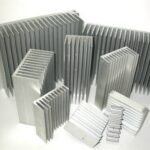Kirchhoff’s laws
Category: Electrical Articles
11 Aug 18
A German physicist, Gustave Kirchhoff, devised two fundamental laws in the year 1847.
Kirchhoff’s current law (KCL)
- It is also called as first law or node law.
- This law states that the total current flowing towards a node is equal to the total current flowing away from it.
- The sum of the incoming current is equal to the sum of the outgoing currents at a node in the active circuit.
- The other words, the algebraic sum of the currents at a node in the circuit is zero.
∑I =0
Where ∑I stand for the algebraic sum.
Sign conversations
- While applying KCL or current equations ∑I =0, incoming currents are assumed positive and outgoing current is treated as negative.
Kirchhoff’s voltage law (KVL)
- It is also called as second law or mesh law.
- This law states that in a closed active circuit, the algebraic sum of the products of the current and the resistance of each branch of that circuit is equal to the resultant emf (or the algebraic sum of the EMFs) in that circuit.

